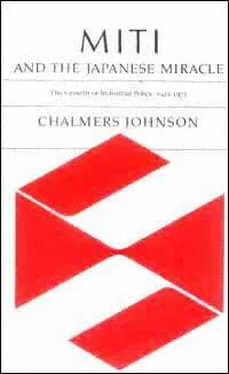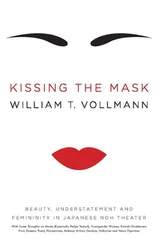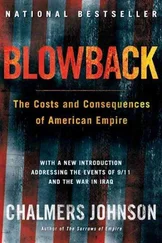Chalmers Johnson - MITI and the Japanese miracle
Здесь есть возможность читать онлайн «Chalmers Johnson - MITI and the Japanese miracle» весь текст электронной книги совершенно бесплатно (целиком полную версию без сокращений). В некоторых случаях можно слушать аудио, скачать через торрент в формате fb2 и присутствует краткое содержание. Год выпуска: 2007, Издательство: Stanford University Press, Жанр: Старинная литература, на английском языке. Описание произведения, (предисловие) а так же отзывы посетителей доступны на портале библиотеки ЛибКат.
- Название:MITI and the Japanese miracle
- Автор:
- Издательство:Stanford University Press
- Жанр:
- Год:2007
- ISBN:нет данных
- Рейтинг книги:3 / 5. Голосов: 1
-
Избранное:Добавить в избранное
- Отзывы:
-
Ваша оценка:
- 60
- 1
- 2
- 3
- 4
- 5
MITI and the Japanese miracle: краткое содержание, описание и аннотация
Предлагаем к чтению аннотацию, описание, краткое содержание или предисловие (зависит от того, что написал сам автор книги «MITI and the Japanese miracle»). Если вы не нашли необходимую информацию о книге — напишите в комментариях, мы постараемся отыскать её.
MITI and the Japanese miracle — читать онлайн бесплатно полную книгу (весь текст) целиком
Ниже представлен текст книги, разбитый по страницам. Система сохранения места последней прочитанной страницы, позволяет с удобством читать онлайн бесплатно книгу «MITI and the Japanese miracle», без необходимости каждый раз заново искать на чём Вы остановились. Поставьте закладку, и сможете в любой момент перейти на страницу, на которой закончили чтение.
Интервал:
Закладка:
During the recession of 1965 the main form of MITI's administrative guidance was investment coordination done in "cooperative discussion groups." Whatever businessmen or their representatives may have said in the Diet about MITI, Sahashi, or the Special Measures Law, in private they welcomed these cartels to stave off the consequences of their own preemptive investment and the weakening of demand during the recession. On January 29, 1965, the discussion group for petrochemicals decided that new ethylene-producing facilities for fiscal 1965 and 1966 should be limited to 350,000 tons, and that firms already established in the industry should be the only ones to develop such facilities. And on March 18, 1965, the synthetic textiles discussion group agreed on a formula for new acrylic fibers facilities that would keep output below 30 tons per day. In May 1965 MITI set up a paper pulp industry discussion group, and in November 1966, one for the ferroalloys industry. Other industries employed the specialized committees of the Industrial Structure Council for the same purpose, and the council ultimately replaced the discussion groups as the place where most industrialists and financiers got together to agree on how much each was going to invest in what kinds of plants and equipment.
Another important form of administrative guidance during this period was the promotion of mergers. Sometimes this meant nothing more than MITI's bringing the parties together and endorsing their union before the FTC. The biggest such merger was the reamalgamation on June 1, 1964, of the three companies that had come into being after SCAP broke up the old Mitsubishi Heavy Industries. However, sometimes more was needed to achieve a merger than mere verbal
Page 268
encouragement. During fiscal 1963 the Japan Development Bank set aside some ¥3 billion (enlarged to ¥6 billion during 1964) for "structural credit" loans to large firms that merged. The government had long used easy financing to encourage mergers among medium and smaller enterprises; now it extended such funds to the automobile, petrochemical, and alloy steel industries. In the merger of the Nissan and Prince automobile companies, which was finally consummated on August 1, 1966, Nissan is alleged to have received a reward in the form of an $11.1 million loan from the JDB.
42
The government justified this kind of largesse as part of its export promotion policies, since economies of scale lowered the prices of export products. As Holler-man notes, "It is ironic that whereas zaibatsu dissolution was undertaken by the occupation authorities in the name of economic democracy, their reconstruction is now being pursued in Japan in the name of import liberalization."
43
Sahashi credits Minister Sakurauchi with bringing off the Nissan-Prince merger, but most observers believe that Sahashi himself did most of the work.
44
These months of "structural recession," mergers, and administrative guidance led up to and conditioned Vice-Minister Sahashi's last hurrahthe fight he had with the Sumitomo Metals Company of Osaka because it refused to abide by his administrative guidance. Steel, in Inayama Yoshihiro's words, is the "rice of industry," and the steel industry has long been regarded by knowledgeable observers as the "honor student" of the Japanese government-business relationship.
45
During the mid-1960's, however, MITI was having some problems with its prize pupil. Because the Yawata works had been founded as a state enterprise (which in 1934 became the major participant in Japan Steel, a public corporation), four of the "big six" steel companies (Yawata, Fuji, Nippon Kokan*, Kawasaki, Sumitomo, and Kobe) distrusted MITI's impartiality on the grounds that it had a soft spot in its heart for its ''true children," Yawata and Fuji, the successors to Japan Steel after SCAP broke it up. Moreover, relations with the steel industry were delicate. All of the big six firms had high-ranking former MITI officials on their boards of directorsexcept for Sumitomo, which refused on principle to hire bureaucrats. But even so it was hard to give direct orders to the industry because so many of its executives were top leaders in business organizations such as Keidanren and Keizai Doyukai*.
There were two main problems in the administration of the steel industry: coordination of investment for new blast furnaces and converters, and coordination of production in order to maintain prices at
Page 269
a reasonable level. Inayama of Yawata had long held that avoidance of price fluctuations in the steel industry was in the national interest, both to ensure that the industry could schedule repayments on the loans for its huge investments and to avoid the ripple effect that price instability in steel had on the rest of the economy. From the era of priority production just after the war down to approximately 1960, MITI had exercised detailed control over investments in the steel industry through the plans of the Industrial Rationalization Council and through the policy use of the Foreign Capital Law. In 1960 Vice-Minister Matsuo (who went to Nippon Kokan * after his retirement) had proposed a steel industry law to establish an investment-coordination cartel as an exception to the Antimonopoly Law, but the industry had rejected it in favor of self-coordination, legalized by MITI's alleged supervision but actually carried out by the Japan Steel Federation. By 1965 this attempt at self-regulation had broken down, and overcapacity in the steel industry combined with the recession threatened to bankrupt some of the biggest firms in the nation.
The immediate issue was a MITI recommendation to reduce production (
kankoku
sotan
*) designed to prevent a collapse of steel prices. The ministry "recommended" (ordered) that for the second quarter of fiscal 1965 (July to September) each company cut its production by 10 percent based on its share of total output during the second half of fiscal 1964 (October 1964 to March 1965). All of the "big six," including Sumitomo, went along with this. Then, on November 9, 1965, MITI ordered that this reduction be continued into the third quarter (the trough of the recession hit in October). Sumitomo refused to accept this administrative guidance on the grounds that it was the only company among the big six that had met its MITI-assigned export quota for the first half of the fiscal year, and it charged that the biggest operators, Yawata, Fuji, and Nippon Kokan, had diverted some of the steel supposedly produced for export into the domestic market. Sumitomo argued that MITI's base for determining market shares failed to take account of export performance of the various companies and was biased against the newer, better-managed firms in the industrysuch as Sumitomo.
The president of Sumitomo Metals, Hyuga* Hosai*, was an old hand at this sort of thing. He had served Sumitomo continuously since his graduation from Todai* Law in 1931 and had gained experience in the governmental bureaucracy at first hand as secretary to Minister of Finance Ogura Masatsune (of Sumitomo) in the third Konoe cabinet (1941). During 1965 he was the leading figure in the Osaka branch of
Page 270
Keizai Doyukai *. He had no difficulty whatsoever in controlling his enthusiasm for MITI's intervention in the steel industry, which he believed had always favored Yawata and Fuji.
On November 18, 1965, after Hyuga's* initial opposition, MITI Minister Mikihimself an LDP faction leader, holder of the record as the longest continuously elected member of the Diet, and a future prime ministergot on the telephone and, according to Hyuga*, promised that if Sumitomo would go along with the production cut through at least the third quarter, he would act favorably on Sumitomo's investment plans for its big Wakayama steel works (the company intended to add a fourth blast furnace and a fourth and fifth rotary furnace, or converter). Sahashi had not been directly involved in this dispute until Hyuga's defiance of MITI, and both he and Miki are vague on whether they consulted each other before Miki's call.
Читать дальшеИнтервал:
Закладка:
Похожие книги на «MITI and the Japanese miracle»
Представляем Вашему вниманию похожие книги на «MITI and the Japanese miracle» списком для выбора. Мы отобрали схожую по названию и смыслу литературу в надежде предоставить читателям больше вариантов отыскать новые, интересные, ещё непрочитанные произведения.
Обсуждение, отзывы о книге «MITI and the Japanese miracle» и просто собственные мнения читателей. Оставьте ваши комментарии, напишите, что Вы думаете о произведении, его смысле или главных героях. Укажите что конкретно понравилось, а что нет, и почему Вы так считаете.












